History Headline: The familiar drumroll of Ayodhya
These lines could well have been from 26 years ago when Mahant Avaidyanath, Adityanath’s mentor, the head of the Gorakhnath Math and one of the leading lights of the Sangh Parivar’s temple movement, had hit out at the “delay”.
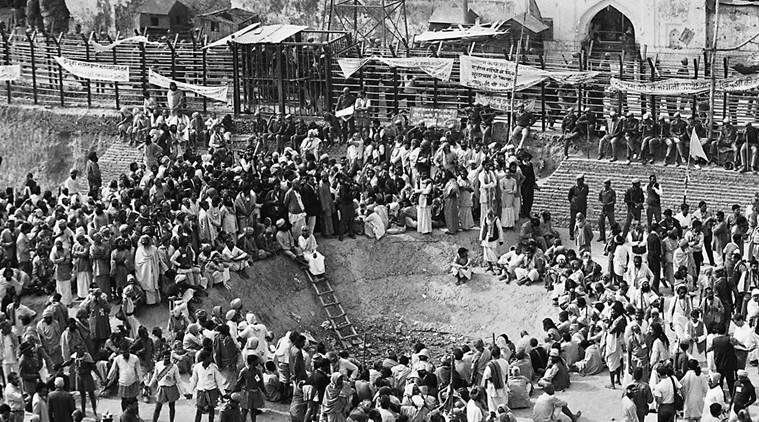
Kar sevaks at the site facing the Babri Masjid in July 1992. (Praveen Jain/Archives)
“Sometimes, justice delayed amounts to injustice… it would be better if the court decides early, for the sake of peace and harmony in the country. But I don’t see it happening at this stage.”
That was Uttar Pradesh Chief Minister Yogi Adityanath on October 30, a day after the Supreme Court deferred hearing on the Ram Janmabhoomi-Babri Masjid title suit saying a bench will decide a date in January.
These lines could well have been from 26 years ago when Mahant Avaidyanath, Adityanath’s mentor, the head of the Gorakhnath Math and one of the leading lights of the Sangh Parivar’s temple movement, had hit out at the “delay”.
And eight years ago, when the Supreme Court asked the Allahabad High Court to delay its verdict on the title suit — it was delivered a week later and is now in appeal before the top court — that was also Ashok Singhal of the VHP, angry at what he thought was “another bid to delay justice”.
As Adityanath lends weight to the Parivar chorus for an early decision on the title suit in the run-up to 2019, reporters like me, who camped weeks in Ayodhya in the final months of the Babri Masjid, are struck by the uncanny resemblance between the utterances then and now.
The matter then was before the Allahabad High Court, now before the Supreme Court. But the larger message has been the same, the utterances a re-run of attempts to ratchet up the pressure for an early decision on, what the High Court called, “a small piece of land… where angels fear to tread… full of innumerable land mines” which “we are required to clear”.
In July 1992, five months before the demolition of the Babri Masjid, leaders of the VHP and Hindu religious heads oversaw a kar seva at a spot facing the three domes on the disputed 2.77 acres — it was where the Rajiv Gandhi government, trying to reach out to Hindus after his government overturned the Shah Bano ruling to surrender to Muslim orthodoxy, had allowed the shilanyas ceremony in November 1989 for a future temple.
Racing against time and court orders, the kar sevaks raised a concrete platform to mark what would be the Singhdwar, the main entrance of the temple they planned to build. Work was halted after Prime Minister P V Narasimha Rao sought three-four months to find a solution.
But the storm clouds had been gathering long before the monsoon of 1992. In June 1991, Kalyan Singh, at the head of a BJP government, had replaced Mulayam Singh Yadav as Chief Minister of Uttar Pradesh. Ayodhya had also helped the BJP secure 120 seats in the Lok Sabha, up from 85 in the 1989 elections. Soon after taking charge, Kalyan Singh headed to Ayodhya with his ministers and the promised Ram temple became a priority.
Moving swiftly, his government invoked the Land Acquisition Act and issued two notifications in October 1991 for acquisition of “certain property” close to the Ramjanmabhoomi-Babri Masjid complex “for the purpose of development of pilgrimage and providing amenities” to pilgrims.
Muslims were worried, and furious. The acquisition proceedings were challenged before the Allahabad High Court and Supreme Court. In November 1991, the Supreme Court, taking note of the assurances Kalyan Singh had given the National Integration Council (NIC), directed Uttar Pradesh to stick to what he had told the NIC.
So what were these assurances that the NIC incorporated in its resolution? Essentially four: all efforts will be made to find an amicable resolution; pending final solution, UP will be fully responsible for the protection of the Ramjanmabhoomi-Babri Masjid structure; court orders regarding the land acquisition proceedings will be fully implemented; and, judgment of the Allahabad High Court in the cases pending before it will not be violated.
What followed thereafter had the temple votaries in raptures. Several structures, not far from the disputed one, were razed. The official stand was that these were “levelling operations” by the state government to create a parikrama facility for pilgrims. Contempt petitions were filed in February and March 1992.
But these only steeled the VHP resolve, its leaders convinced that Ayodhya had become a chessboard, every temple move countered by petitions in courts to keep them in check. Singhal never tired telling reporters how “sentiments of crores” were being hurt because of the “delay in justice”.
So in July that year, the Parivar intensified its temple campaign, picking the start of Chaturmas, the four-month period devoted to penance and vows, to return to the shilanyas spot. It was there that kar sevaks built a concrete platform, the foundation of the entrance to the temple.
On July 15, the Allahabad High Court restrained “any construction on the land”, with the observation that “if there is any necessity for doing something on the land for its use, prior permission from the Court would be obtained” — this was recorded by the Supreme Court in its ruling later on the contempt petition filed by Mohammad Aslam Bhure and Acchan Rizvi.
At the end of Chaturmas, with no sign of any solution that PM Rao had talked of, the VHP called the fifth Dharma Sansad in Delhi on October 30-31. Singhal addressed an assembly of nearly 5,000 which “decided to begin continuous kar seva for the construction of Shri Ram Mandir at Ayodhya from 06 December, 1992”.
The rest is not history. It’s the present, the future. Because the forces arrayed this time are unprecedented, with the BJP heading majority governments in Uttar Pradesh and the Centre. Only the Supreme Court holds the fort in a battle that has always been about politics rather than law.
The writer covered the Ram Janmabhoomi movement in 1990-92, leading up to the Babri demolition.
For all the latest Opinion News, download Indian Express App
More From Rakesh Sinha
- Returning to Ayodhya 25 years later: For sons of men killed fleeing, this dispute is not quite overSubhash Pandey and Mohammed Shahid live in different parts of Ayodhya but share a common story — of life at a standstill from the time…
- Final Ayodhya hearing starts today, litigants have a common plea: decide, once and for allIn September 2010, the Allahabad High Court ruled that Nirmohi Akhara, Sunni Central Wakf Board, UP and Ramlalla Virajman were joint holders of the disputed…
- Returning to Ayodhya: ‘Yogi here, Modi there, Gods played a role..temple if not now, then never’Revisiting Ayodhya: An iron fencing painted yellow runs around the entire acquired area with a three-tier security arrangement in place. The disputed site is in…
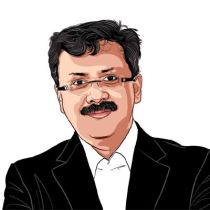
 CRPF Jawans at the newly constructed Ram Temple on 7.12.92. (R K Sharma/Archives)
CRPF Jawans at the newly constructed Ram Temple on 7.12.92. (R K Sharma/Archives)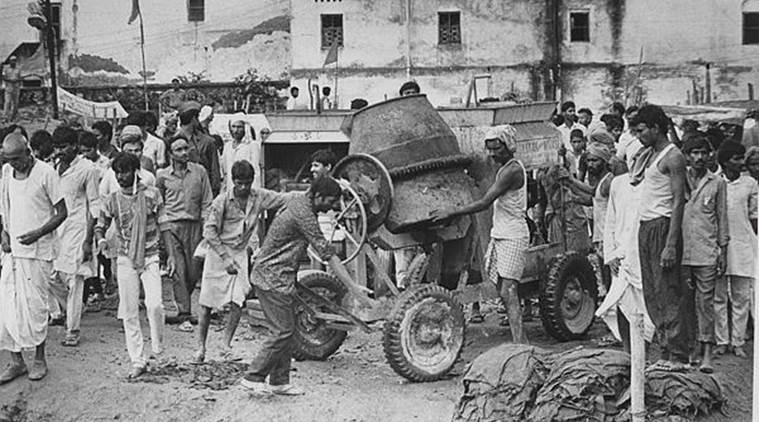 Kar Sewaks are working to build Ram Temple at Ayodhya. (Archive)
Kar Sewaks are working to build Ram Temple at Ayodhya. (Archive)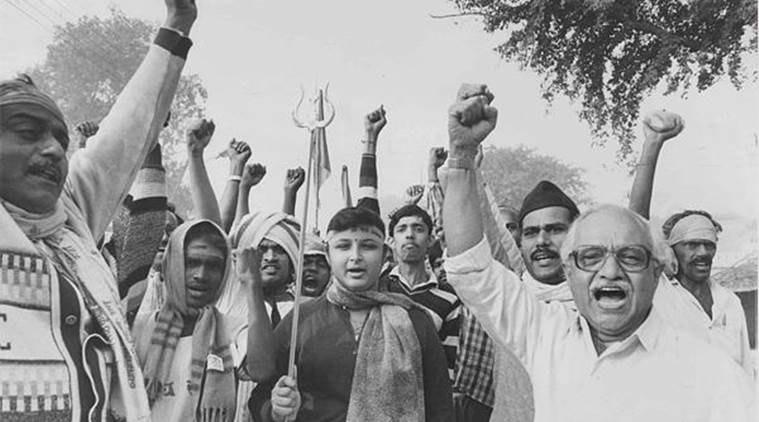 Kar Sevak going in a procession to the site of Ram Temple. (RK Sharma/Archive)
Kar Sevak going in a procession to the site of Ram Temple. (RK Sharma/Archive)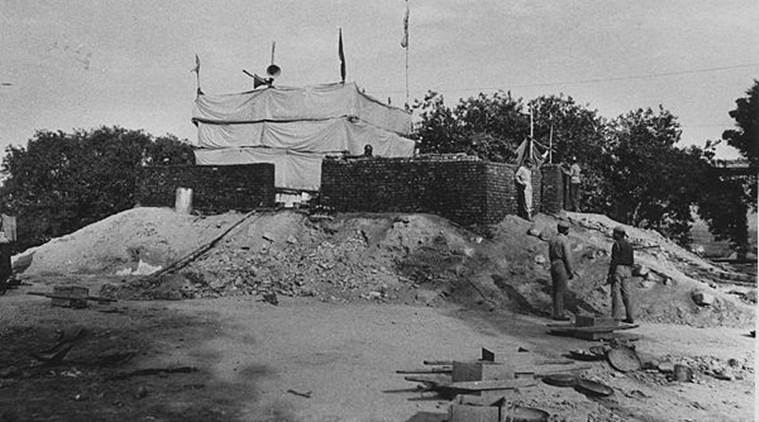 Newly constructed Ram Temple at Ayodhya. (RK Sharma/Archive)
Newly constructed Ram Temple at Ayodhya. (RK Sharma/Archive)





































No hay comentarios:
Publicar un comentario